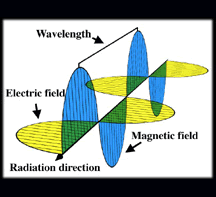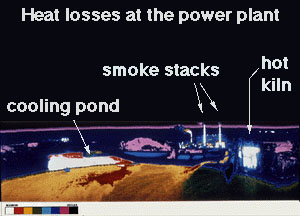ExploraTour - Looking at the World in a Different Light
Radiant energy, called "electromagnetic radiation", is released every time an electron slows down, changes its orbit around an atom or vibrates back and forth. Through these changes in its motion, the electron creates a changing electric field.
It is an observed fact that when an electric field is changing, a magnetic field appears. And when a magnetic field is changing, an electric field appears. This is how an electromagnetic wave works and how it is able to travel immense distances from faraway stars to our small solar neighborhood. The wave's changing electric field produces a changing magnetic field which in turn creates another changing electric field and on and on and on.
If you observe the electric and magnetic fields as the wave passes by, you will note that the size of the fields go up and down again and again. The distance in space between peaks in the field is called the "wavelength". The number of peaks that a non-moving observer counts per second as the wave passes by is called the "frequency".
The electric and magnetic fields in the wave point in directions that are 90 degrees apart and both fields point 90 degrees away from the direction the wave is moving.
The most familiar form of radiant energy is visible light.












